Stefan Vogel
eigentlich schön
Long opening hours – 26 APR 2024, 6-9 pm
Painting is normally understood as a process in which colour is applied to a surface. The artist Stefan Vogel shows how much more painting can be. Hos works are the product of a process in which Vogel transcends the usual boundaries of the medium of painting in terms of materials and space but does not completely abandon it. The exhibition “eigentlich schön” at Galerie Michael Haas illustrates this process: Vogel hangs large-format canvases in the gallery’s rooms, in which the painting appears more as a collage of materials – sometimes reduced or lavishly designed – whereby these become a new pictorial ground and the paintings become part of a larger, spatial collage. He covers the walls with curtains dipped in plaster and then exposes the canvases again in a decollage. The result is an expansive installation that is to be understood as one work: a three-dimensional, collaged painting.
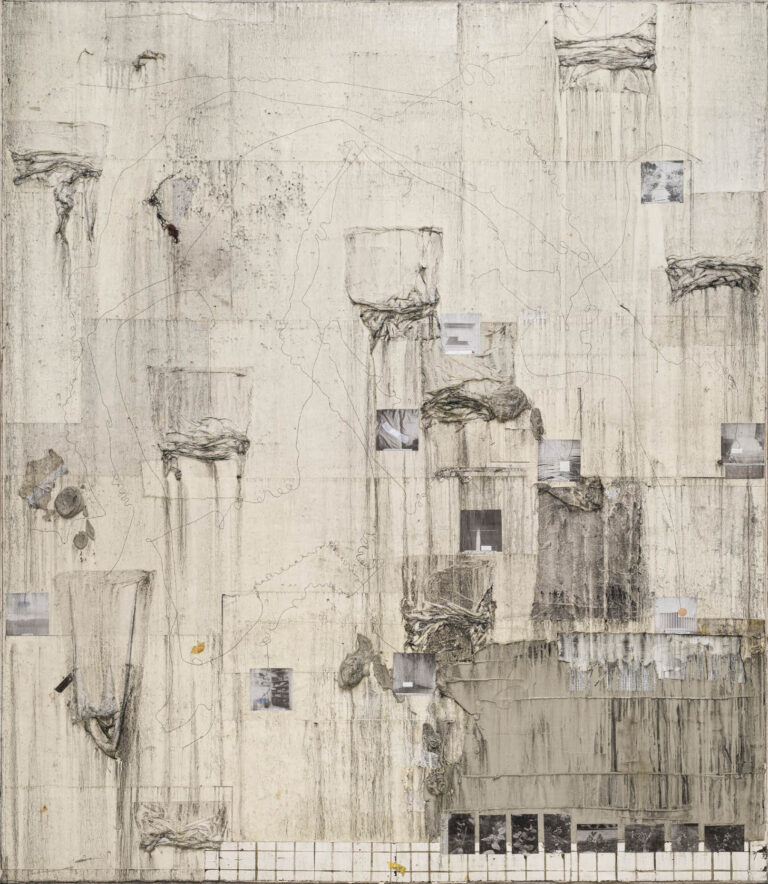
Stefan Vogel
eigentlich schön wenn die Sprache nicht wäre und all die Winkel, 2024, paper, tile adhesive, copies, yarn, stapler needles, typewriter, dirt, glue, ink, Zewa, varnish, oil paint, pencil, silicone, acrylic and plasters on polyester fabric, 230 x 200 cm. Photo: Falk Messerschmidt
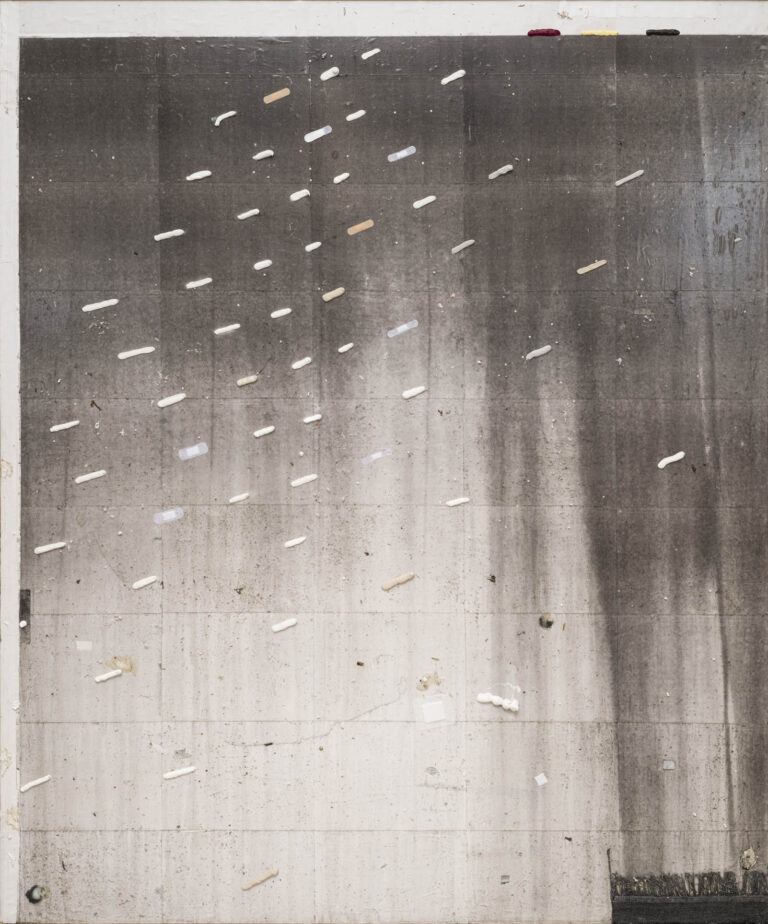
|
Stefan Vogel |
eigentlich schön, es kommt immer durch, 2024, paper, silicone, construction adhesive, carpet, plaster, acrylic, ink and copies on polyester fabric, 240 x 200 cm. Photo: Falk Messerschmidt
Vogel’s works serve to examine sociological issues, which are at the centre of his work: Modes of behaviour and communication, or generally mechanisms of living together in today’s society. The artist Stefan Vogel (*1981 in Fürth) lives and works in Leipzig. He had his first solo museum exhibition “Relax, it’s only Paranoia” at the Kunstsammlung Chemnitz in 2021. His work is characterised by a special material aesthetic, subtle poetry and a reduced formal language borrowed from minimal art.
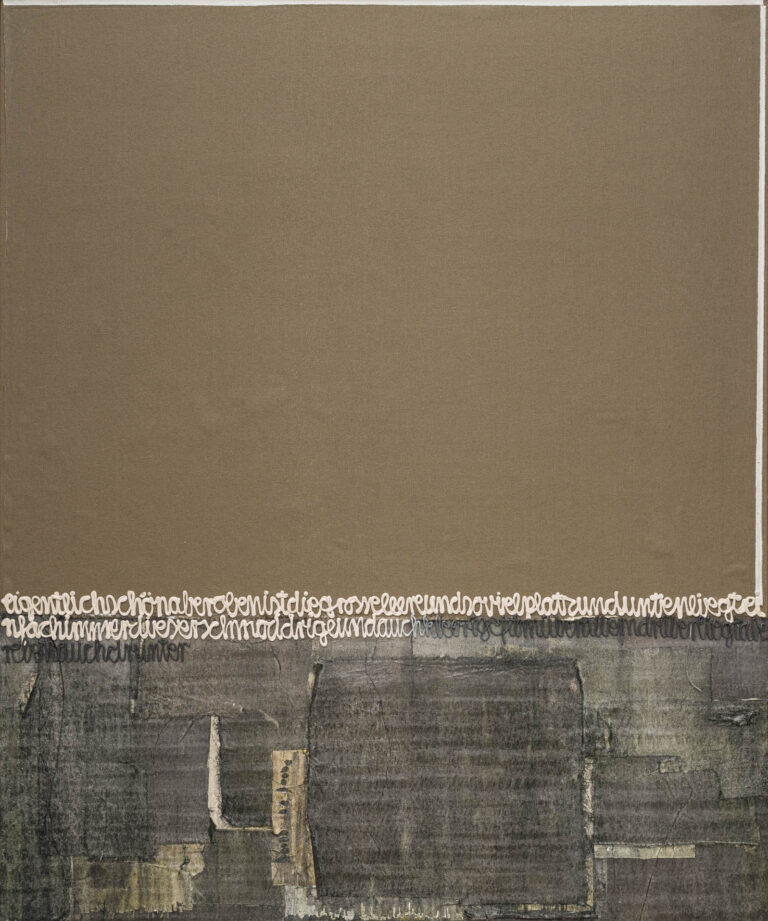
|
Stefan Vogel |
eigentlich schön, aber oben ist alles offen und unten alles verklebt, 2024, paper, copies, ink, dirt, acrylic, silicone, glue and oil paint on polyester fabric, 240 x 200 cm. Photo: Falk Messerschmidt
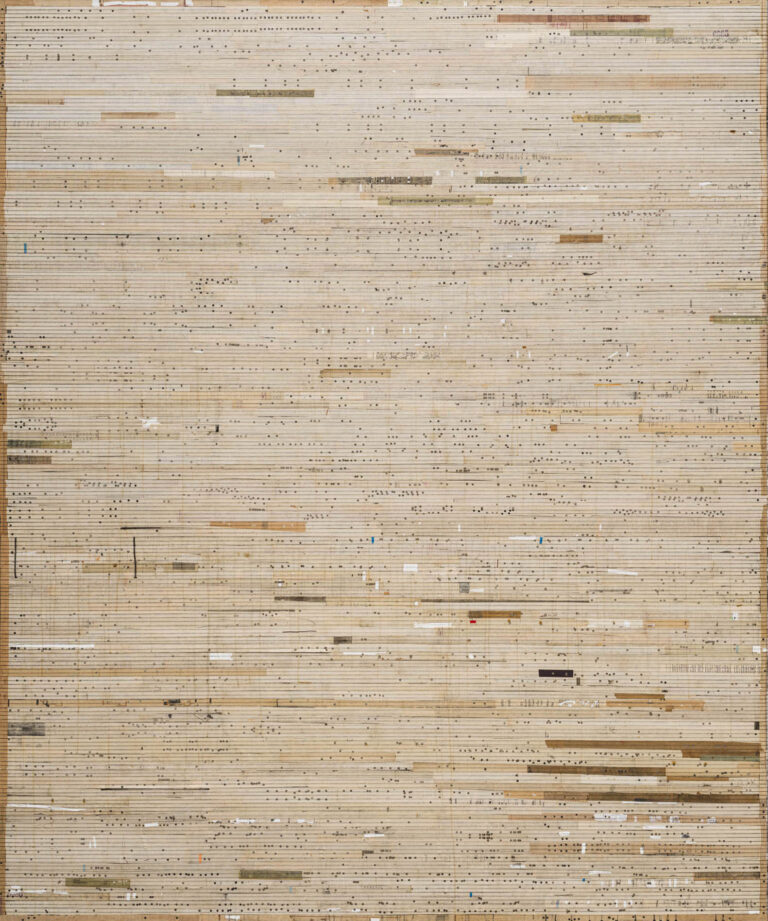
|
Stefan Vogel eigentlich schön, mit dem Abdafür und Gesang, 2024, paper, paint, ink, Tipp Ex, Tesa post-its and glue on polyester fabric, 240 x 200 cm. Photo: Falk Messerschmidt |
Due to the great response, the exhibition will be extended until 28 April and can also be viewed during Gallery Weekend Berlin.
Hans Peter Adamski, Peter Bömmels, Walter Dahn, Jiří Georg Dokoupil, Gerard Kever, Gerhard Naschberger
Mülheimer Freiheit
Opening – 26 APR 2024, 6-9 pm
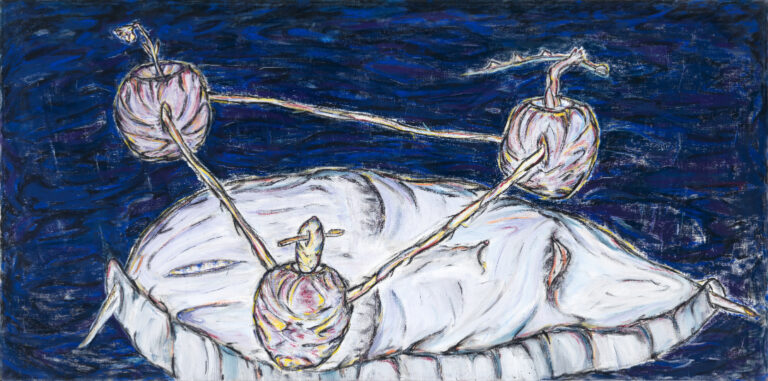
|
Peter Bömmels, Der große und der kleine Rhythmus, 1983, Pastellkreide und Acryl auf Nessel, 100 x 200 cm © Galerie Michael Haas, Berlin. Foto: Lea Gryze |
After the art world had allowed itself to be distracted from the classical pictorial for years by minimal art and conceptual art, a huge “hunger for images” emerged at the end of the 1970s. In the autumn of 1980, the six friends Hans Peter Adamski, Peter Bömmels, Walter Dahn, Jiří Georg Dokoupil, Gerard Kever and Gerhard Naschberger moved into a shared studio at Mülheimer Freiheit 110 in Cologne. Their provocative, spontaneous, often figurative works soon became part of every renowned exhibition of “wild painting” in the early 1980s. The group engaged in an intensive, continuous exchange – Walter Dahn and Jiří Georg Dokoupil in particular collaborated frequently and worked together on paintings and sculptures – but without committing themselves to a unified concept. They work without a manifesto or statute; their association is based on their friendship, a unified attitude towards the art of the 1970s and the desire to radically break with it. In addition to the strong group dynamic, Mülheimer Freiheit is characterised by a high degree of questioning of their own work and themselves; they are far from taking themselves too seriously.
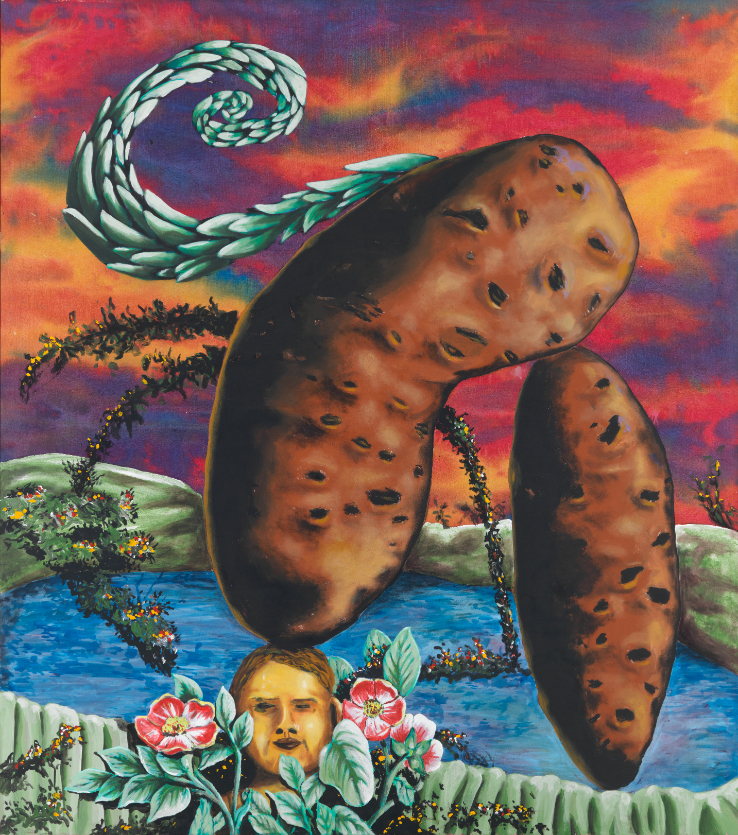
|
Hans Peter Adamski, untitled, 1986, acrylic on canvas, 170 x 150 cm © Galerie Michael Haas, Berlin. Photo: Lea Gryze |
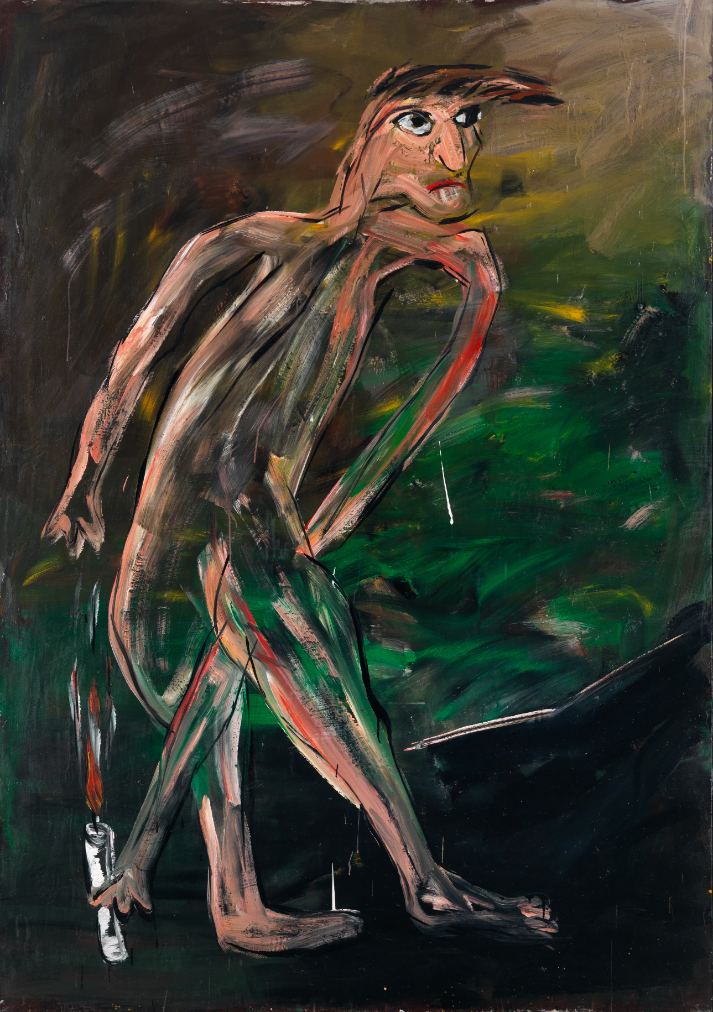
|
Walter Dahn, untitled (Mann mit Kerze), 1982, dispersion on canvas, 225 x 160 cm © Galerie Michael Haas, Berlin. Photo: Lea Gryze |
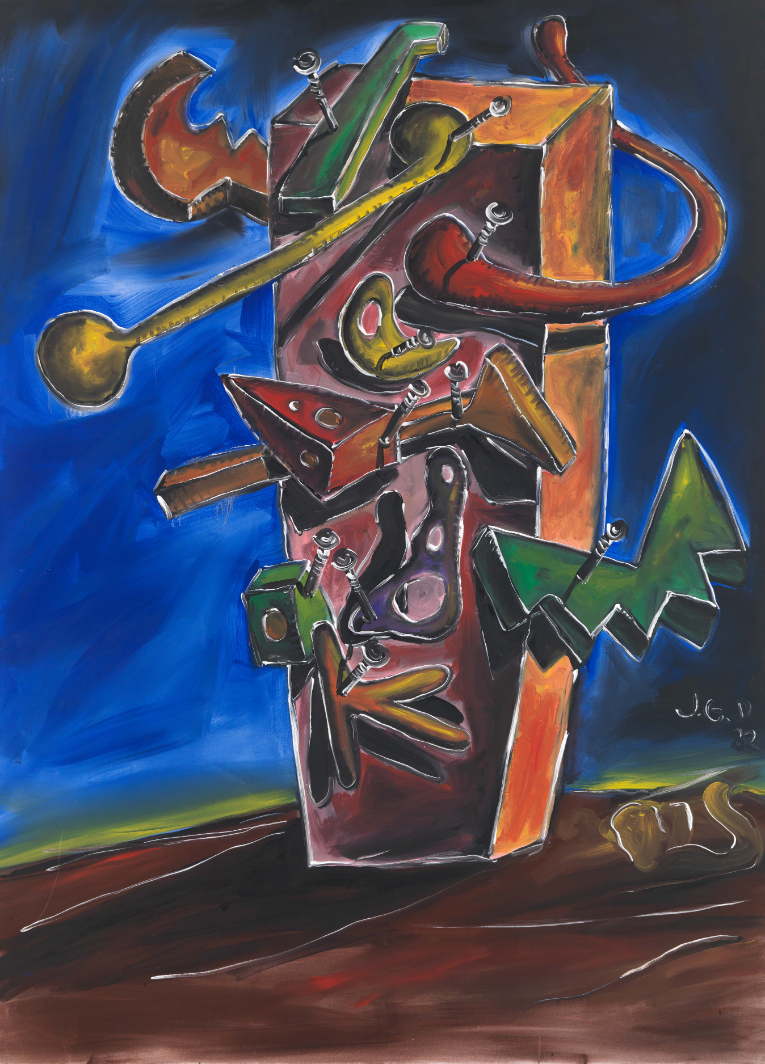
Jiří Georg Dokoupil, untitled, 1982, acrylic on canvas, 220 x 160 cm © Galerie Michael Haas, Berlin. Photo: Lea Gryze
Although the group split up only a few years later, the artists left behind an unprecedented oeuvre full of absurdities, contradictions and humour, an expression of their consensual rebellion against the frowned-upon conformity of the art of the preceding years. Galerie Michael Haas presents works by the artists of the internationally acclaimed Cologne group Mülheimer Freiheit at Kunst Lager Haas.
